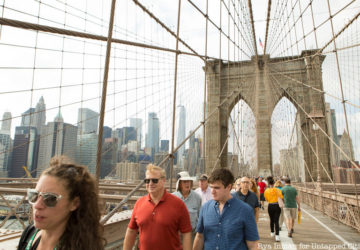2. Gravesend Town Cemetery (1650)

The town plan for Gravesend was if not the first, one of the earliest planned communities in the United States. The town was settled in 1645 by Lady Deborah Moody, the first woman to receive a land charter in the colonies and by all accounts, quite a unique woman. Her out-of-the-box religious beliefs got her banned from London as well as Puritan Massachusetts where she first relocated to in the New World.
In the town plan of Gravesend, there were four quadrants within a 16 acre plot of land, each with ten houses surrounding a central common square. The common square in the southwest quadrant was used as the Gravesend Cemetery, which still exists today. Documents show that a cemetery was in operation here as early as 1650. Lady Moody herself is said to be buried in the cemetery, although her exact burial site is not known today. A plaque from the Gravesend Historical Society at the site notes that Revolutionary War soldiers are also buried here. Unfortunately, the gravestones from the 17th century are no longer there.
Because the Gravesend cemetery was a town burial place, it changed jurisdictions several times — in 1894 it became part of the city of Brooklyn, and in 1898 part of New York City when the five boroughs were consolidated. By the turn of the century, burials were less frequent, mostly for descendants of the original settlers who had plots left. In 1917, the city tried to return the cemetery to the Dutch Reformed Church which refused to take it. To this day, the cemetery is locked although you can see inside through the fences on the street. If you want access into the cemetery, you have to call New York City Parks & Recreation.
You can read more about the town plan for Gravesend in our book Secret Brooklyn. Get an autographed copy from us or a non-autographed copy on Amazon.





